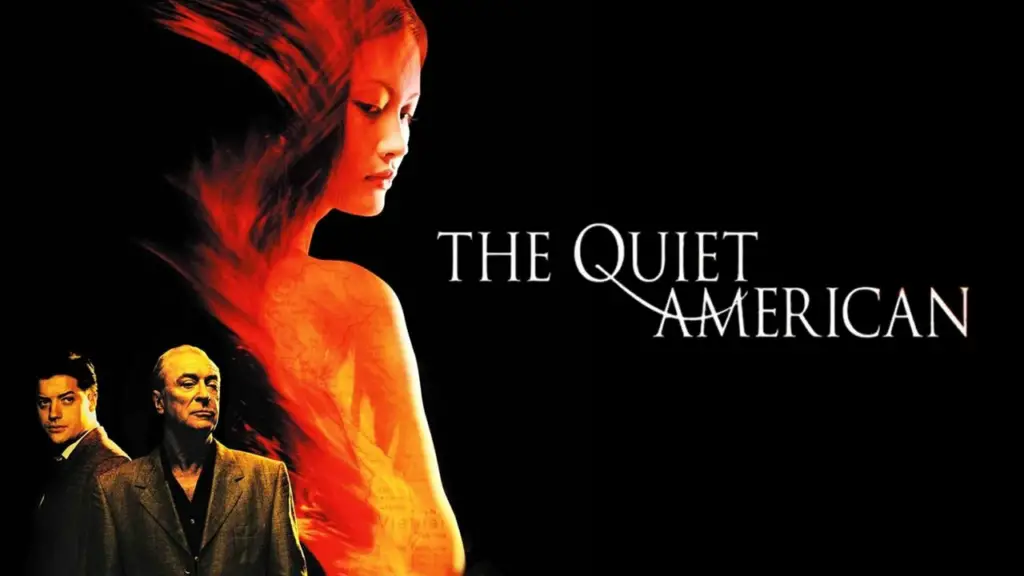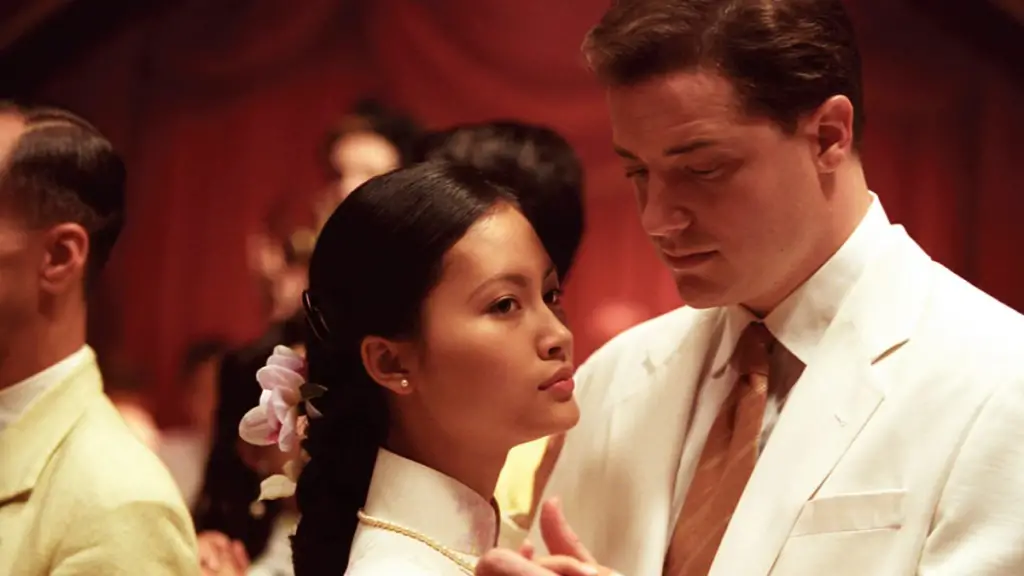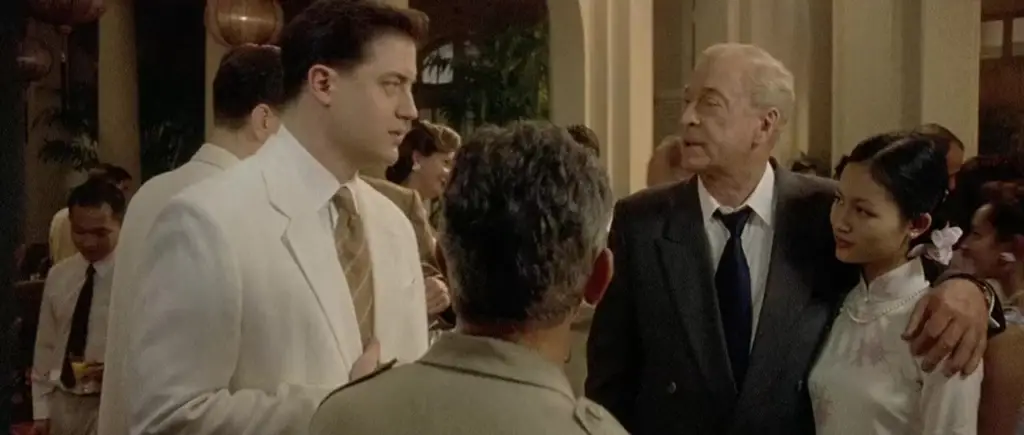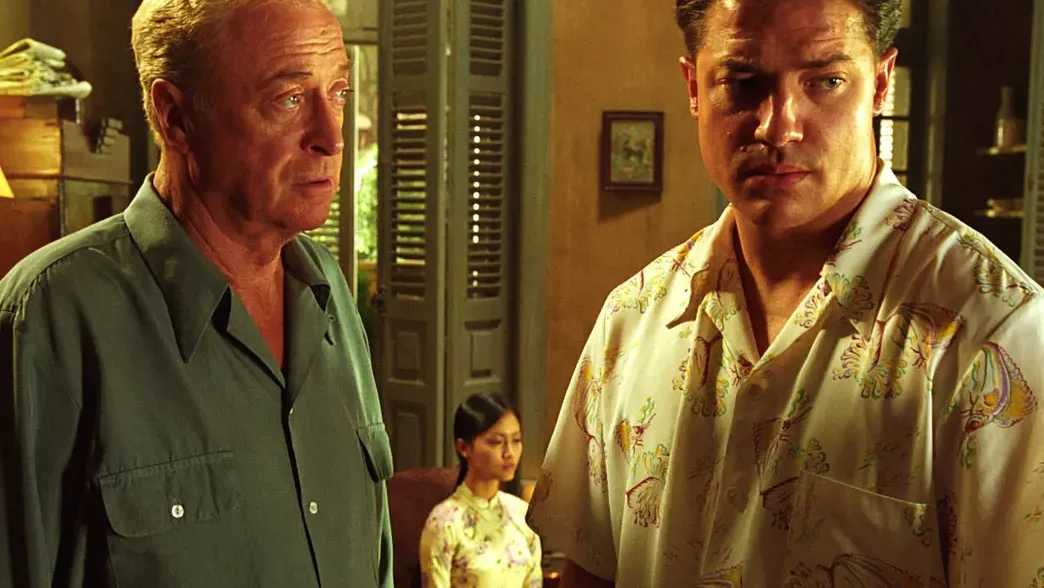Table of Contents
Introduction: The Complexity of The Quiet American
In the world of cinema, few films manage to intertwine complex themes of psychology and philosophy as effectively as The Quiet American. Based on Graham Greene’s novel, this cinematic masterpiece delves deep into the tumultuous landscape of Vietnam during the 1950s, presenting characters that embody conflicting ideologies and moral quandaries.
The film artfully examines the impact of colonialism, identity struggles, and the ethical dilemmas faced by its characters. As we explore The Quiet American explained, we uncover layers of meaning that resonate with timeless existential questions. The narrative is not just a story of love and war; it is a reflection on human nature, compromised ideals, and the consequences of our choices.
Furthermore, the cinematography and storytelling techniques elevate the film, creating an immersive experience that forces viewers to confront their own beliefs about right and wrong. Join us in this analysis as we dissect the psychological motivations of the characters, the philosophical implications of their actions, and much more.

Psychological Perspective: Conflict and Identity in The Quiet American
The Inner Conflicts of Characters
The Quiet American intricately portrays the psychological conflicts experienced by its characters, primarily through the lens of its two male leads, Thomas Fowler and Alden Pyle. Fowler, a British journalist, embodies resignation and moral ambiguity as he navigates the complexities of his life in Vietnam. His inner conflict revolves around love, loyalty, and the ethical implications of his reporting. He grapples with his attachment to Phuong, a Vietnamese woman, as he hastily attempts to balance his affections limited by imperialistic tendencies.
Pyle, on the other hand, represents youthful idealism and American interventionism. His unwavering belief in the righteousness of his cause and his simplistic worldview highlight a significant psychological divide between him and Fowler. This conflict culminates in a clash of ideologies: Fowler’s pragmatism versus Pyle’s naiveté. Throughout the film, the audience is confronted with the psychological tension that these opposing worldviews create, ultimately leading them to question the morality of their actions.
The Quest for Identity
Identity in The Quiet American is portrayed not just as a personal endeavor, but also as a culturally rooted struggle. Fowler’s experiences in Vietnam evoke a longing for connection amidst the chaos of colonial strife and warfare. His identity is shaped by his role as an observer and a participant in the historical narrative of the country. The interplay of personal identity and national identity also surfaces through Pyle’s character, who seeks to impose an American identity onto Vietnam, oblivious to the cultural nuances and complexities of the region.
Phuong’s character serves as a focal point for these quests for identity, as she navigates her allegiances between the foreign men in her life. Her yearning for stability embodies the internal conflict of many individuals caught in the crossfire of clashing cultural identities. The film emphasizes how personal identity is often intricately linked to external circumstances, including war, love, and societal expectations, creating a tapestry of psychological struggles that reflect broader themes of displacement.
Moral Ambiguities
The psychological conflicts in The Quiet American are further amplified by moral ambiguities. Fowler’s reluctance to take a definitive stand against Pyle’s misguided intentions highlights an existential crisis — the fear of choosing sides in a landscape fraught with ethical dilemmas. His ambivalence invites the audience to scrutinize their own beliefs around moral responsibility in times of conflict. Pyle’s determination to “do good” without understanding the ramifications of his actions showcases a troubling psychological detachment, where intentions overshadow consequences.
This complex psychological landscape reveals that identity in wartime is not merely about the self; it’s also about the impact of one’s actions on others. The film provokes a critical examination of how identities are formed and reformed through conflict, ultimately challenging the audience to reflect on the ethical dimensions of their own lives.

Philosophical Themes: Morality and Colonialism in The Quiet American
The Moral Landscape of War
The Quiet American presents a challenging exploration of morality in the context of war. Throughout the film, characters grapple with difficult ethical questions surrounding their decisions and motivations. Fowler’s character embodies a sense of moral ambivalence. As a journalist, he is tasked with documenting the truth yet finds himself conflicted between his duty and personal interests. This ambivalence invites viewers to consider the cost of truth in a war-ravaged landscape and whether moral clarity can ever truly exist when human lives are at stake.
Pyle, on the other hand, represents an idealistic yet misguided moral framework. His belief in the necessity of intervention and the righteousness of American ideals illustrates the philosophical flaw in assuming one’s own morality can be universally applicable. The collision of Fowler’s pragmatism with Pyle’s idealism unveils the moral complexities that stem from colonialism. Pyle’s simplistic view of right and wrong reveals a profound naivety about the cultural, ethical, and human dimensions of interventionist policies.

The Shadow of Colonialism
Colonialism looms large over the narrative, shaping the philosophical undercurrents that flow through The Quiet American. The film highlights the deep-seated socio-political issues stemming from colonial powers attempting to assert their will over Vietnam. Through the interactions between Western characters and the Vietnamese populace, the film interrogates the moral implications of foreign intervention and the weight of historical oppression.
Fowler’s observations serve as a critical commentary on the consequences of colonialism. He is painfully aware of the cultural dissonance that arises when Western ideals are imposed on Eastern realities. This perspective reflects Greene’s critique of colonial motives, suggesting that the legacy of colonialism is not just historical but continues to inform contemporary moral dilemmas. Meanwhile, characters like Pyle embody a colonial mindset, believing that they are on a moral mission while fundamentally misunderstanding the very people they seek to “help.”
The Ethics of Intervention
The philosophical theme of intervention versus non-intervention is a poignant element within the film. Fowler’s reluctance to engage in the conflict sharply contrasts with Pyle’s fervent willingness to act. This dichotomy raises essential questions about the ethics of intervention. Are the motives behind such actions self-serving, or can they genuinely be seen as altruistic? Fowler’s hesitance symbolizes a deeper understanding of the complexities involved in moral actions, while Pyle’s pitfalls exemplify the dangers of seeing morality through a distorted lens.
Ultimately, The Quiet American forces its audience to confront unsettling truths about morality, colonialism, and the ethical responsibilities of individuals in a globally interwoven fabric. The film challenges viewers to scrutinize their beliefs about right and wrong, particularly when navigating the murky waters of so-called righteous causes.

Ending Explained: Interpretation of the Conclusion
The Climactic Confrontation
The conclusion of The Quiet American culminates in a tense confrontation between Fowler and Pyle. The film reaches a critical juncture when Fowler discovers the extent of Pyle’s involvement in the violent events that have unfolded, and he realizes that Pyle has become a threat to both Phuong and the fragile peace in Vietnam. This climactic moment serves as a reflection of the overarching themes of morality and the consequences of intervention that permeate the film.
Fowler’s decision to confront Pyle signifies a turning point; he is no longer the passive observer but rather an active participant in the unfolding tragedy. The intensity of their encounter lays bare the moral ambiguities that have characterized the entire narrative. As Fowler asserts the gravity of his actions, audiences witness the tragic interplay between ambition, love, and the turbulence of the historical context.
The Aftermath of Pyle’s Death
Following the confrontation, the ending reveals the aftermath of Pyle’s death, which forces viewers to grapple with the complications of moral responsibility. Fowler’s initial relief is short-lived, as the reality of taking a life casts a long shadow over his existence. The act resonates deeply, inviting the audience to ponder the psychological and ethical ramifications of violence, even when borne of desperation and self-defense.
Phuong’s reaction to Pyle’s death further complicates matters. She embodies the emotional toll that war and personal tragedy inflict on individuals. The fate of Phuong leaves viewers questioning the implications of loyalty, love, and loss in the wake of conflict. By presenting her response as multi-faceted, the film illustrates how personal experiences are irrevocably shaped by political turmoil and moral choices.
Ambiguity and Reflection
The film concludes with a potent sense of ambiguity, which is emblematic of Greene’s literary style and thematic intent. Fowler’s journey reflects the broader conflicts of morality within the colonial context, leaving audiences with an unsettling contemplation of right and wrong. The final scenes evoke a sense of uncertainty about the future for both Fowler and Phuong. As Fowler walks away, the unresolved tensions linger, provoking critical reflection on the ethical divides that obscure clear answers.
Furthermore, the film’s ending resonates beyond the confines of the narrative, inviting viewers to reflect on the dynamics of power, intervention, and the human condition amidst chaos. Just as Fowler wrestles with his identity and the consequences of his actions, audiences are left to ponder their own values in the face of moral complexity. The Quiet American’s conclusion serves as a powerful reminder that in a world marked by conflict, clarity is often eclipsed by the shades of gray that define human relationships and the exercise of power.
Visual and Narrative Techniques: The Art of Storytelling in The Quiet American
Cinematic Visual Language
The Quiet American employs a rich visual language that mirrors the emotional and psychological undertones of its characters and themes. The cinematography by Roger Deakins is notable for its evocative use of light and shadow, creating an atmosphere that reflects the underlying tensions of war-torn Vietnam. Scenes often transition between bright daylight, portraying the vibrancy of the city, to dimly lit interiors that highlight the characters’ internal struggles and moral dilemmas.
The film capitalizes on its setting to enhance the narrative. The chaotic streets of Saigon act not only as a backdrop but as a character in itself, encapsulating the complexities of colonialism, cultural clashes, and the tension that underlies personal relationships. Close-ups are frequently used to capture the nuanced expressions of Fowler and Pyle, allowing viewers to empathize with their internal conflicts. This meticulous attention to visual detail aids in delivering a narrative that is as much about the characters’ mental landscapes as it is about the external events in Vietnam.

Narrative Structure and Pacing
Narratively, The Quiet American embraces a non-linear storytelling approach, weaving together instances from the present and recollections from the past. This structure mirrors Fowler’s complex emotions as he grapples with his memories, creating a sense of foreboding that enhances the thematic depth of the film. The pacing fluctuates deliberately, alternating between moments of intense action and quieter, introspective scenes that invite reflection on the moral ambiguities presented.
Dialogue plays a crucial role in the narrative technique, with exchanges that are often filled with double meanings and subtext, reflecting the characters’ hidden intentions and psychological nuances. The dialogue cleverly encapsulates the tensions between the characters’ perceptions and realities. Fowler’s observations often reveal his cynicism and weariness as he navigates his relationships, particularly with Pyle and Phuong.
Symbolism and Motifs
Symbolism is another key narrative device that enriches the storytelling in The Quiet American. The ongoing presence of violence, represented through bombings and confrontations, symbolizes the encroaching chaos resulting from colonial legacies. Similarly, the motif of love, interwoven with themes of loyalty and betrayal, acts as a lens through which the characters’ identities are explored. The connection between Fowler and Phuong serves as a poignant reminder of the personal struggles that emerge amid larger socio-political conflicts.
The use of contrast is also prevalent within the film’s narrative structure, particularly in the juxtaposition of Fowler’s experience as a seasoned journalist against Pyle’s idealistic yet naïve worldview. This dynamic highlights the philosophical tensions explored throughout the film, emphasizing the conflict between pragmatism and ideology, making their interactions a focal point for viewers to analyze.
The artistic interplay of visual and narrative techniques in The Quiet American not only captivates the audience but also invites deeper contemplation of the psychological and philosophical dilemmas faced by the characters within the context of war and colonialism.
Book Recommendations: Literary Works Echoing The Quiet American’s Themes
One of the most powerful aspects of The Quiet American is how it intertwines deep themes of morality, identity, and colonialism, which resonate within the larger literary canon. Here are five book recommendations that echo the themes explored in the film:
The Heart of the Matter by Graham Greene
This novel shares thematic similarities with The Quiet American, delving into the moral complexities faced by its protagonist, Scobie, a colonial officer in Sierra Leone during World War II. Greene examines the struggles of loyalty, personal conviction, and the impact of war on the human psyche, making it an essential companion to understanding the moral dilemmas presented in both works.
Buy The Heart of the Matter here
One Hundred Years of Solitude by Gabriel García Márquez
This landmark novel explores the complexities of identity and the cyclical nature of history in the fictional town of Macondo. Through its rich, multi-generational narrative, Márquez intricately weaves themes of colonialism, love, and the consequences of human actions—a reflection of the broader impacts of colonial rule similarly portrayed in The Quiet American.
Buy One Hundred Years of Solitude here
The Quiet American (the novel) by Graham Greene
Of course, the original source material is essential for a deeper understanding of the film’s themes. Greene’s novel provides a more nuanced exploration of the characters’ motivations, the political landscape of Vietnam, and the philosophical inquiries into morality and intervention, making it a critical read for anyone looking to analyze both the book and the film.
Buy The Quiet American (the novel) here
The Sorrow of War by Bao Ninh
This semi-autobiographical novel offers a poignant account of the Vietnam War from the perspective of a North Vietnamese soldier. It delves into the emotional and psychological devastation resulting from war, paralleling the themes of lost innocence and moral ambiguity that are central to The Quiet American. Ninh’s evocative storytelling provides a stark and intimate look at the human cost of conflict.
Buy The Sorrow of War here
A Passage to India by E.M. Forster
In this classic novel, Forster explores the tensions between British colonialism and Indian culture in early 20th-century India. The intercultural misunderstandings and personal conflicts faced by the characters echo the themes of identity and moral dilemmas presented in The Quiet American, making it an essential read for understanding colonial dynamics.
Buy A Passage to India here
Conclusion: The Lasting Impact of The Quiet American
In the intricate tapestry of The Quiet American, Graham Greene presents a compelling exploration of the human psyche against the backdrop of colonial strife and moral ambiguity. As we have examined the psychological conflicts and philosophical themes that echo throughout the film, it becomes evident that The Quiet American explained is not merely a story of love and war but also a profound reflection on the complexities of human nature and the impact of historical forces.
The characters of Fowler and Pyle serve as vessels for Greene’s inquiries into identity, morality, and the ethical responsibilities that come with intervention. Their contrasting ideologies invite viewers to grapple with their own beliefs about right and wrong, making the film resonate on a personal level. Furthermore, through rich visual storytelling and narrative techniques, the film captures the essence of a turbulent era, emphasizing that the consequences of our actions often transcend borders and generations.
As we reflect on the themes presented in both the novel and the film, we are reminded of the importance of understanding the moral implications of our choices in a world fraught with conflict. Ultimately, The Quiet American challenges us to consider how history shapes our identities and the ethical dilemmas we face, ensuring its place as a timeless work that continues to inspire discussion and introspection.
Take a look at all our in-depth reviews here.




